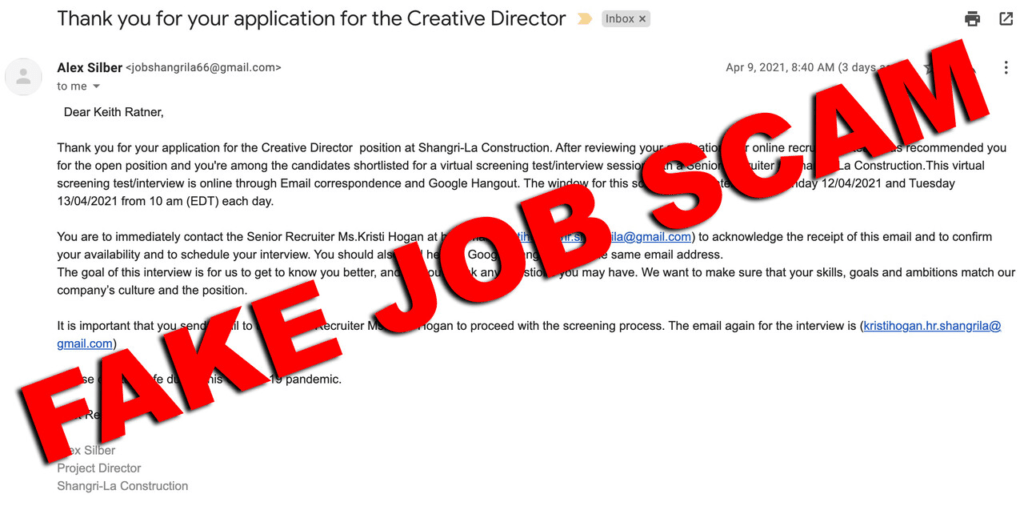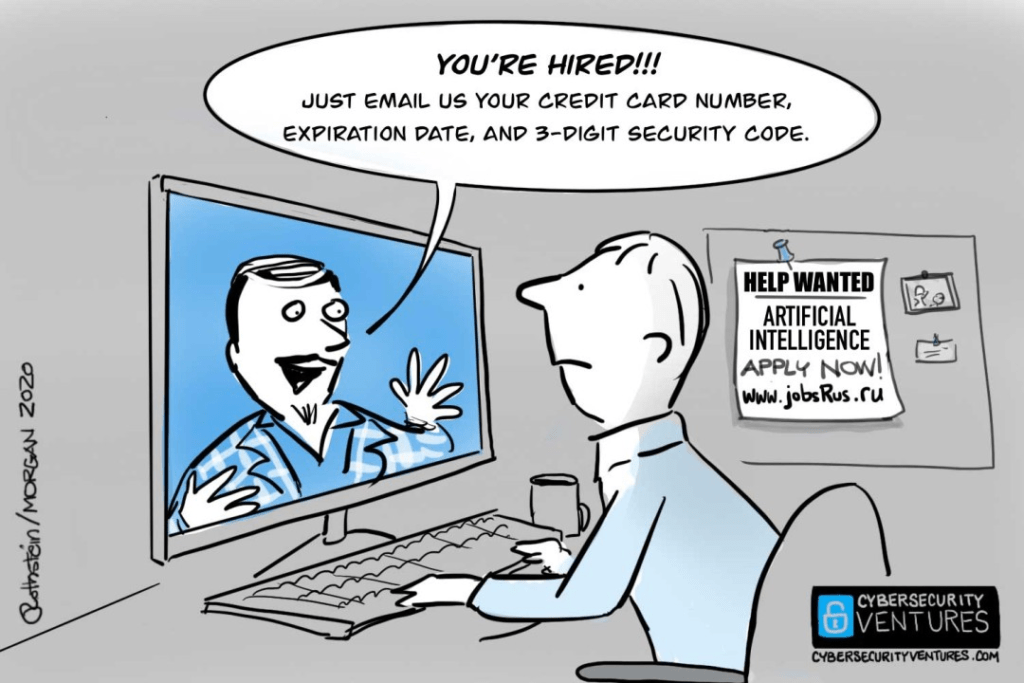With over 830 million members and growing, LinkedIn has become a top destination for job seekers and employers. But where opportunity exists, scammers aren’t far behind.
Job scams on LinkedIn can lead applicants to waste time, lose money, and risk identity theft. we’ll reveal common LinkedIn job scams to watch for and provide tips to avoid being duped.
Table of Contents
What are the Most Common Job Scams on LinkedIn?

While most opportunities on LinkedIn are legitimate, schemers have grown skilled at impersonating real companies and crafting convincing fake postings to take advantage of eager applicants.
Here are the most frequent job scams reported on LinkedIn:
1. Fake Job Listings
Fraudsters mimic well-known companies by slightly altering names and logos and posting convincing job ads. Once applicants respond, they’re told to complete “screening” tasks that require disclosing personal data, installing software, or paying fees that enrich scammers.
2. Mystery Shopper Gigs
Scammers post listings for lucrative secret shopper or mystery shopper positions that require visiting local stores to evaluate services. Yet after being “hired,” applicants have to use their own money to purchase items or pay for certifications that directly benefit scammers.
3. Overpayment Schemes
Applicants receive job offers that come with a sign-on bonus or an oversized first check. They’re instructed to deposit the check and then wire back the “accidental” overage. In reality, the checks are fake and bounce after applicants return real cash.
4. Phishing Emails
Scammers send emails under recruiter personas inviting applicants to interviews. Links and attachments contain malware that compromises sensitive data once downloaded. Email addresses are often misspelled or impersonate real people.
5. Executive Assistant Cons
Listings target applicants eager to support high-profile executives. After being “hired,” the supposed executive pressures assistants to handle tasks like purchasing gift cards, sharing login credentials, or wiring funds…all ways targets get ripped off.
This covers the most widespread current ploys. But scammers are constantly evolving new schemes, so continued vigilance is essential.
Top Warning Signs a LinkedIn Job Posting is Fake

While scammers work hard to seem credible, some red flags can signal if an opportunity is a scam:
- Names/logos are slightly off – Like “MacDnoalds” or altered branding
- The role seems too good to be true – High salary for little experience
- The interview process is non-standard – Heavy focus on personal details
- Requests banking information – Legit employers won’t ask for this early
- Poor grammar/spelling – Sloppy text is a giveaway
- “Work from home” flexibility – This promise hooks victims
- Requests paying fees upfront – Real jobs don’t charge to start
- Uses pressure tactics – Aggressive demands to act fast are manipulative
- Requests purchasing supplies – Employers provide resources
If an opportunity seems questionable, always thoroughly vet the poster and specifics before proceeding or applying.
Expert Tips to Avoid Job Scams on LinkedIn
Here are pro tips to sidestep scams and stay safe while job hunting on LinkedIn:
- Search postings directly – Avoid clicking links in messages. Go directly to LinkedIn jobs to find credible openings.
- Vet companies thoroughly – Research any unfamiliar companies to confirm they’re real before engaging.
- Verify contact info – Email addresses/numbers should match the company domain and come from real employees.
- Look for verification badges – Legitimate LinkedIn job ads include verification badges. Scams won’t.
- Avoid wire transfers/gift cards – Never pay initial “fees” with these payment methods which scammers abuse.
- Skip software downloads – Don’t download attachments/files in messages – common malware source.
- Guard personal details – Don’t hand over sensitive info like SSNs without fully verifying credibility first.
- Talk pay in person – Discuss salaries/pay only in live interviews, never over chat/email.
- Keep expectations realistic – Walk away if deals sound too good to be true. They likely are.
Staying vigilant, trusting your gut, and verifying everything prevents you from falling for the countless job scams lurking on LinkedIn. If unsure, disengage.
Can You Report Job Scams on LinkedIn?

If you come across a fraudulent job posting or questionable recruiter on LinkedIn, you can report them to help protect others from being scammed.
To report a potential scam:
Step 1) Click the “More” dropdown on the job posting or recruiter profile.
Step 2) Select “Report/Block.”
Step 3) Choose “Scam” as the reason.
Step 4) Add any details about why you feel this is fraudulent.
Step 5) Submit the report.
You can also report sketchy messages sent to you by clicking “Report” within the message thread.
By alerting LinkedIn, you help them investigate bad actors and fake listings using the platform. Stopping these schemes protects all LinkedIn members.
Also Read – Cracking the LinkedIn Code: 37 Job Search Tips to Catapult Your Career
Beware of These Common Job Scam Tactics on LinkedIn

Beyond just listings, job scammers employ other deceptive tactics when engaging applicants. Look out for:
1. High-Pressure Tactics
Scammers try to panic applicants into ignoring red flags using tactics like:
- Pushing for immediate interview/hiring decisions
- Saying the role will go to another candidate if you don’t act fast
- Not providing time to thoroughly review details or research the company
2. Overly Friendly/Flattering Tone
Con artists build false rapport through effusive comments like:
- “I’m super impressed with your background!”
- “You’re perfect for this high-level executive position.”
- “I feel like we connect and you’d thrive in this company.”
3. Requests for Personal Info
Scammers mine details like:
- SSN
- Bank accounts
- Addresses
- Photos
- IDs Claiming it’s for “background checks” when it’s really for identity theft.
4. Upfront Money Requests
Demands to pay for:
- Training
- Certificates
- Equipment
- Software
Real employers provide these and don’t charge to start work.
5. Phony Checks
Sending bogus checks applicants are told to cash and then return a portion. The checks later bounce, but by then real money has been sent.
Look out for these psychological tactics and requests. They often indicate nefarious motives vs. legitimate hiring practices.
Real-Life LinkedIn Job Scam Stories and Examples

To drive home how prevalent and sneaky LinkedIn job cons are, here are some real-world examples reported by users:
High-End Retailer Impersonation
Olivia got a message from a recruiter claiming to represent the high-end clothing brand Burberry. While the profile seemed legitimate, interview questions asked for Olivia’s SSN, driver’s license, and banking info—huge red flags. She ultimately realized it was identity thieves impersonating the elite retail company.
Fake Design Firm
Andrew was thrilled to be “hired” by a design firm that didn’t exist. After accepting, they sent a $4,200 check to purchase equipment and asked him to wire back the $3,200 balance. The check later bounced costing Andrew $3,200 of his real money.
Payment for Training Scam
Nicole got an administrative assistant job offer from a supposed tech executive. After requiring $400 payment for “training,” the scammer ghosted her. LinkedIn verified the “executive” was fake.
Malware Attachment
Lucas applied for a logistics role and received an interview request with an attachment to complete first. He downloaded it, only to have ransomware encrypt his computer files until he paid $500 to unlock them.
Fake Shopping Evaluator
Julia took a mystery shopper job to visit and assess stores. The “employer” sent her a bad check for $1,950 to use for purchases. Their bank caught the fraud before she spent her own money.
These real-world job scams illustrate how easily one could be deceived if not vigilant. Always verify legitimacy before submitting personal data or money.
Also Read – How to Use LinkedIn to Accelerate Your Network Marketing Success
How Should You Respond If You Encounter a Job Scam on LinkedIn?
If you realize you’ve crossed paths with a scammer, act quickly:
- Document details – Save job postings/messages with scam indicators.
- Report the scams – Flag fraudulent listings and recruiters to LinkedIn immediately.
- Notify your bank – If share financial details, alert your bank of potential risk.
- Freeze credit – If personal data, consider freezing credit as a precaution.
- Change passwords – If you entered login credentials anywhere, change passwords.
- Scan devices – Run antivirus scans if you downloaded any files or clicked links.
- Warn others – Consider sharing your experience publicly or with connections to prevent others from being victimized.
Don’t panic, but take action to limit damages and exposure after the fact. Also, file police reports for serious fraud instances.
How Can Job Seekers Protect Themselves from Scams on LinkedIn?
Proactively protecting yourself starts with:
- Enabling two-factor authentication – Adds account security.
- Using unique passwords – Don’t reuse passwords between accounts.
- Checking privacy settings – Limit profile visibility to connections only.
- Ignoring unsolicited outreach – Connect with recruiters/companies directly instead.
- Verifying senders – Vet names, domains, and titles extensively before responding.
- Avoiding wire transfers – Never send money without direct confirmation of recipients.
- Sharing judiciously – Don’t hand over any personal details until fully verifying credibility.
- Listening to your gut – Walk away if an opportunity seems questionable or too good to be true.
Staying guarded, skeptical, and confirming everything helps deter scammers looking for easy marks. Assume risk until fully validated.
Key LinkedIn Job Scam Red Flags to Remember
Here’s a quick recap of some core red flags that signal a job post or message is likely a scam:
- Fake company names/logos
- Requests for personal sensitive data
- Pressure to act extremely quickly
- Poor grammar and spelling errors
- Requires paying fees to start
- Promises very high pay for little experience
- Communicates only via LinkedIn messages vs. phone/email
- Asks you to deposit money into your account
- Attachments contain suspicious links or files
- Money is involved – checks, wire transfers, gift cards
Stay on high alert if you notice any of these indicators. Protect yourself and your data.
Conclusion
While the majority of LinkedIn job postings are legitimate, scams do run rampant. By learning common tactics and red flags, users can avoid being duped into wasting time or losing money.
Slow down and thoroughly vet any opportunities, recruiters, or hiring managers before providing personal information or payment. Listen to your instincts. If something seems questionable, cease communications.
Report any suspected fraud to protect others. Stay vigilant, and you can unlock amazing job opportunities on LinkedIn safely.







